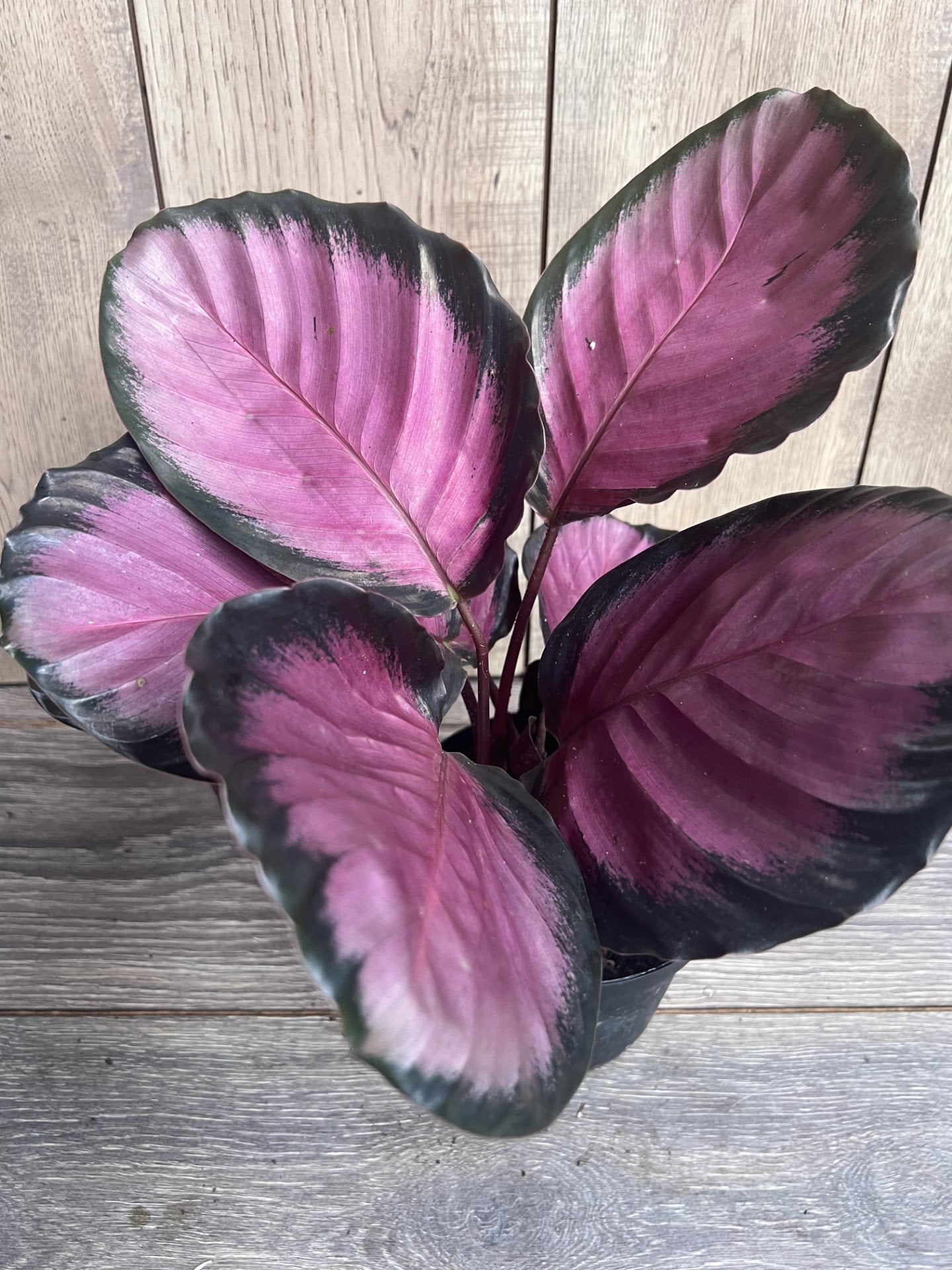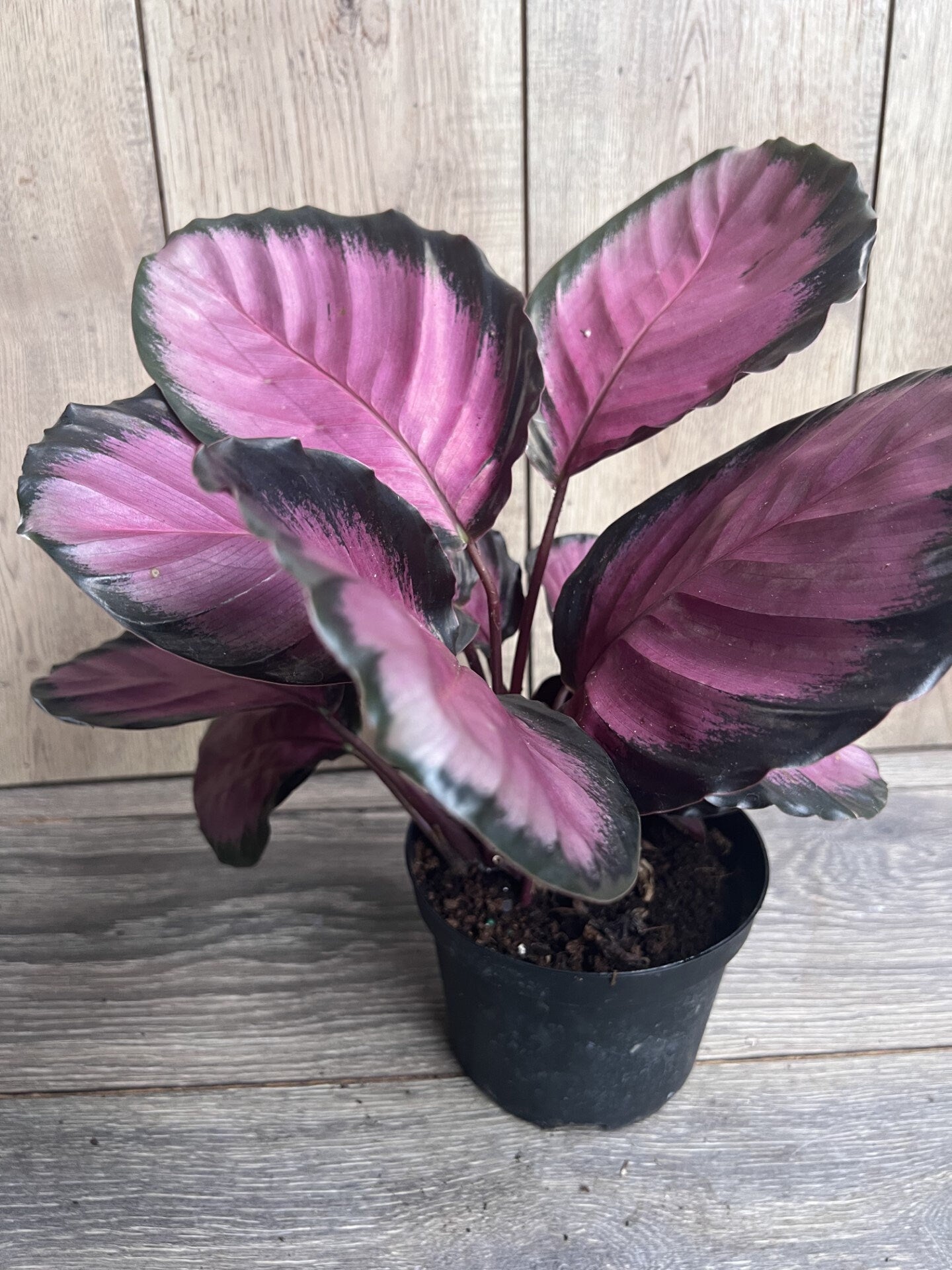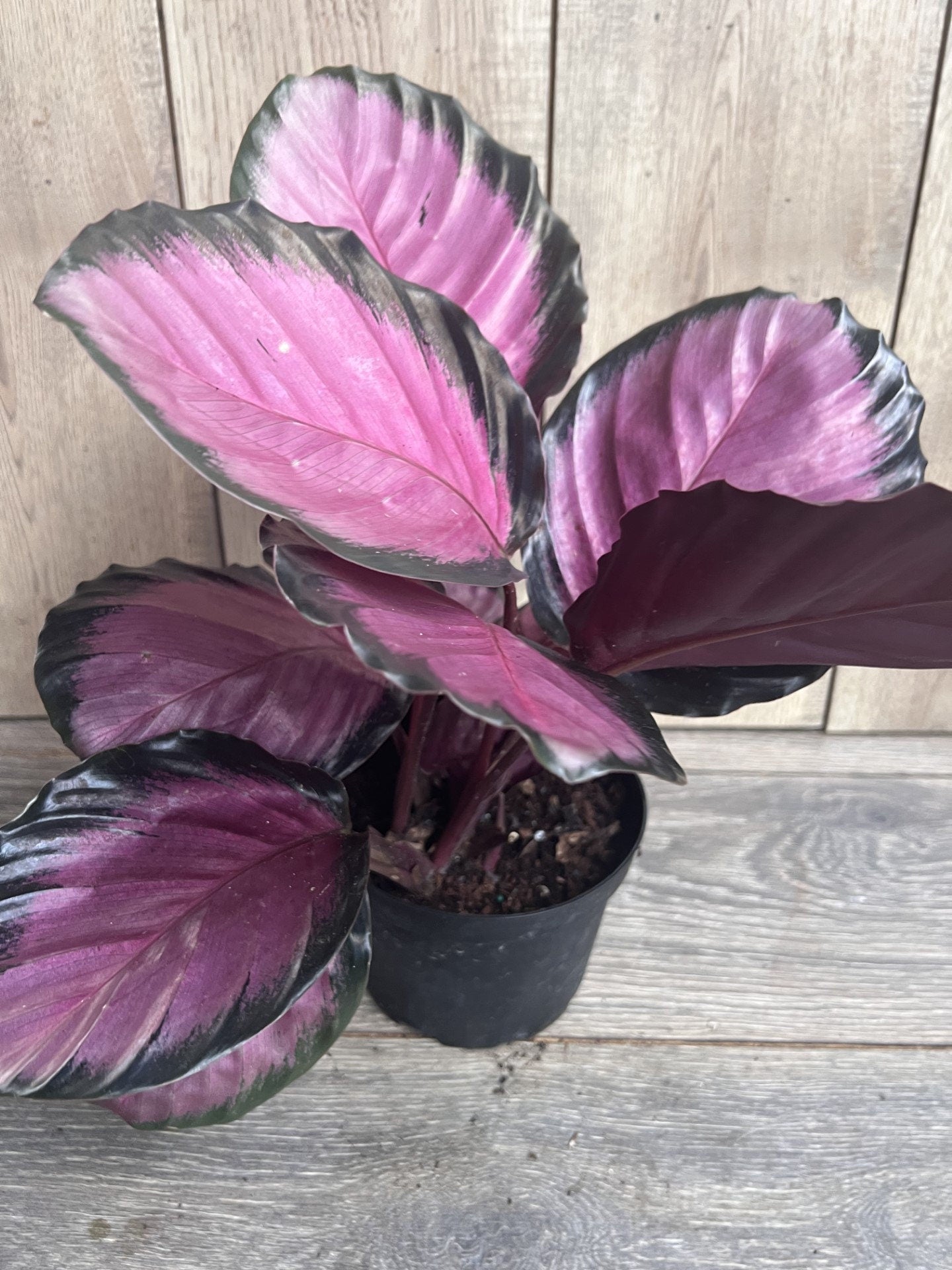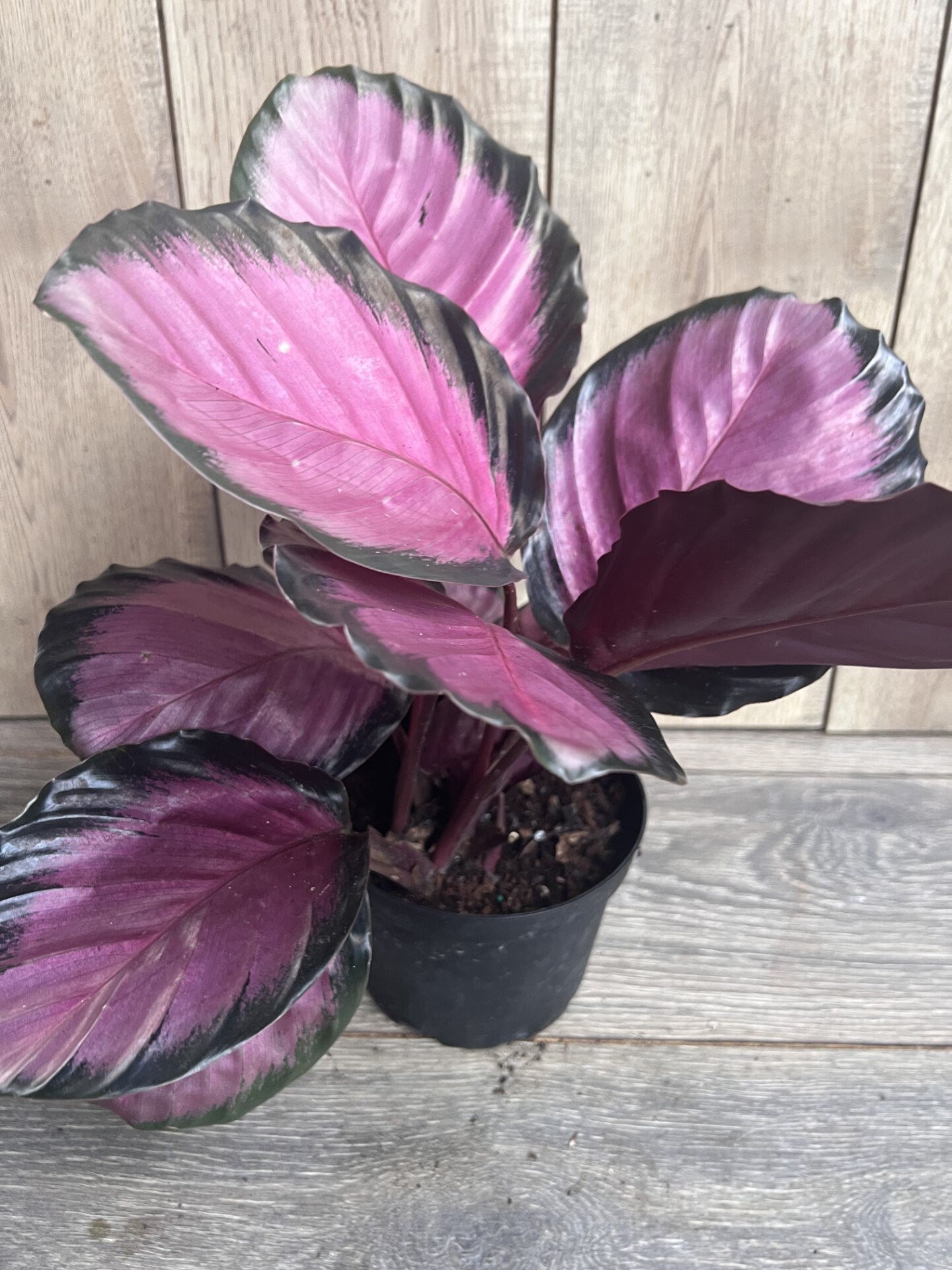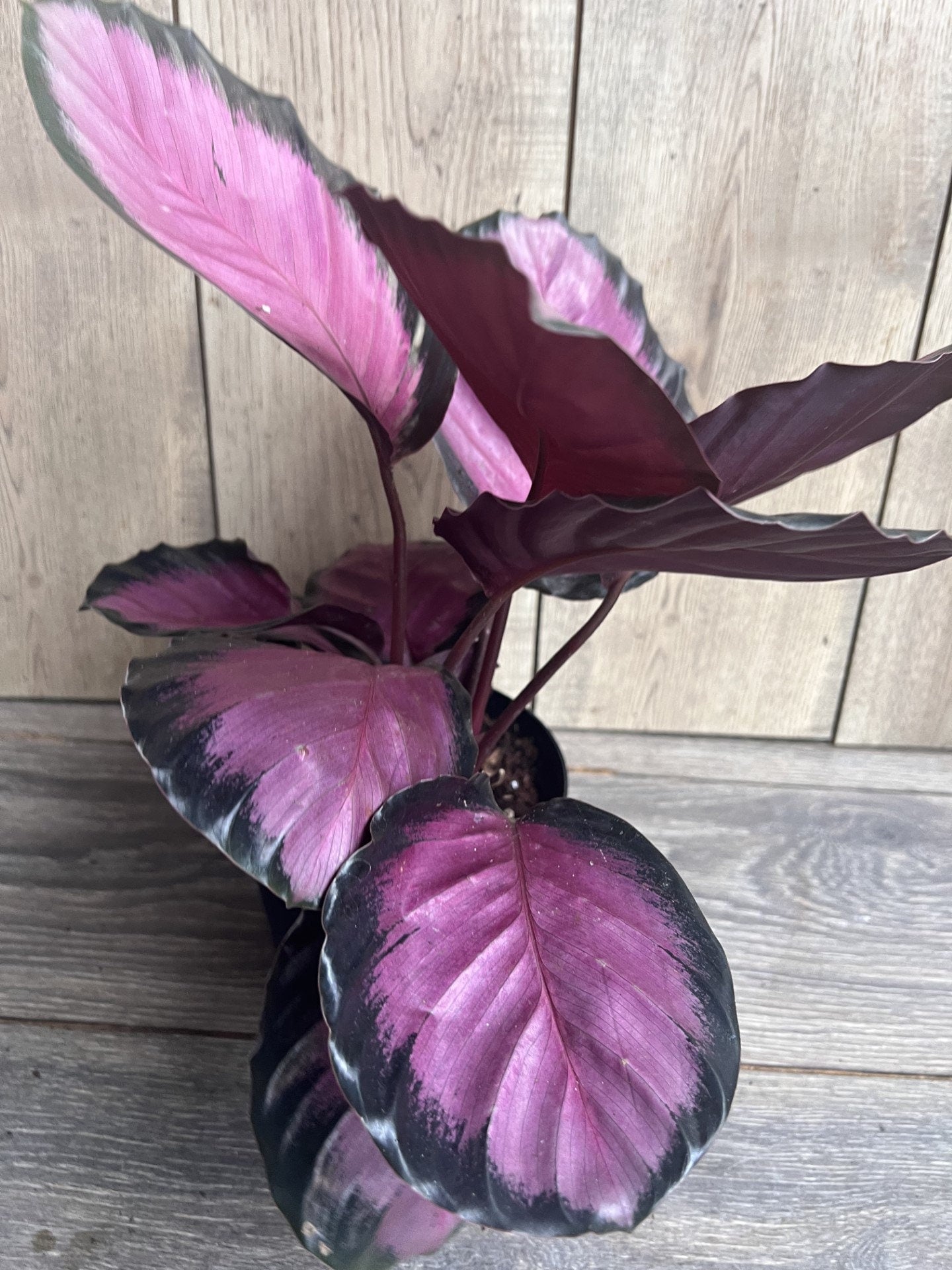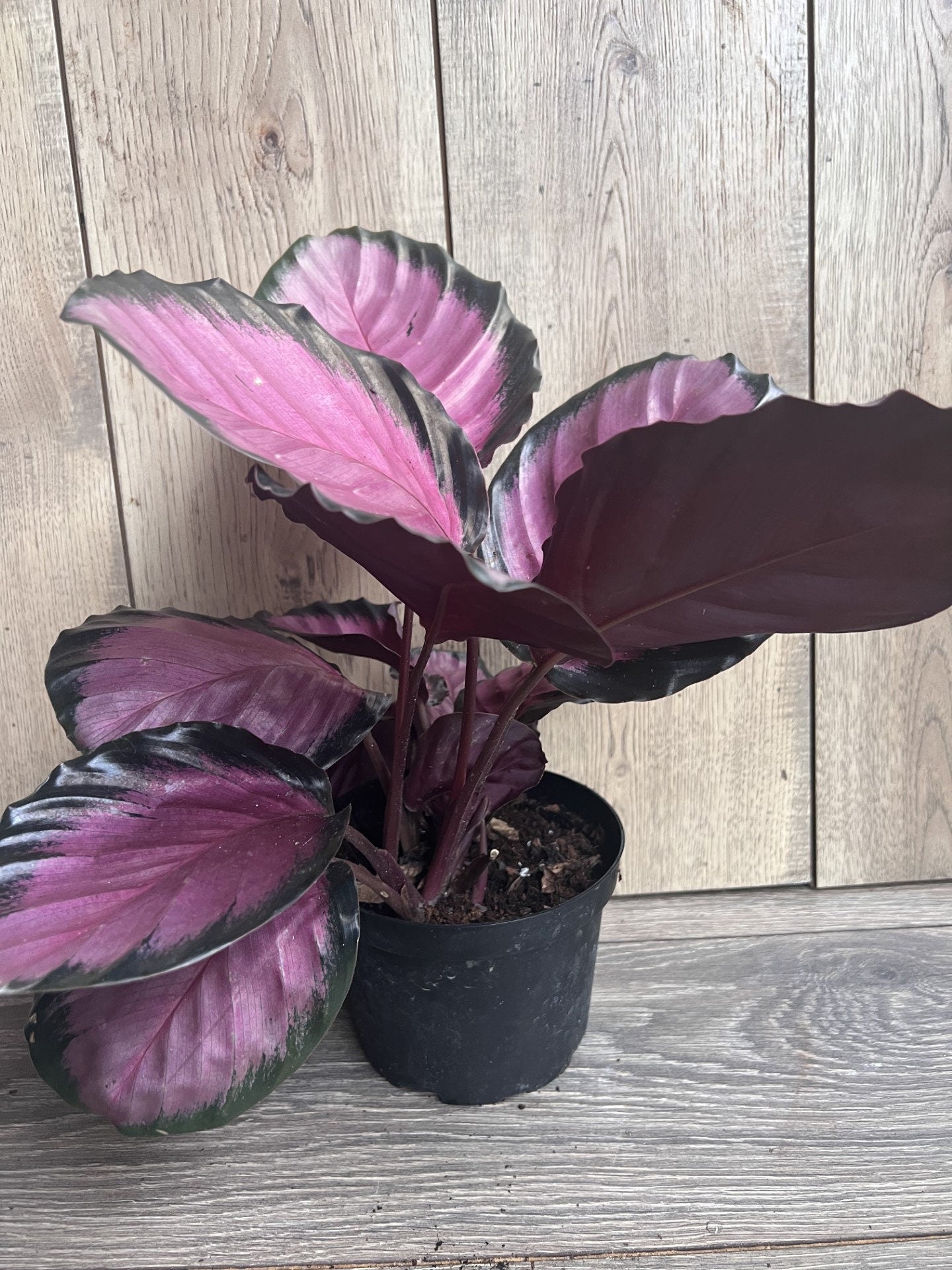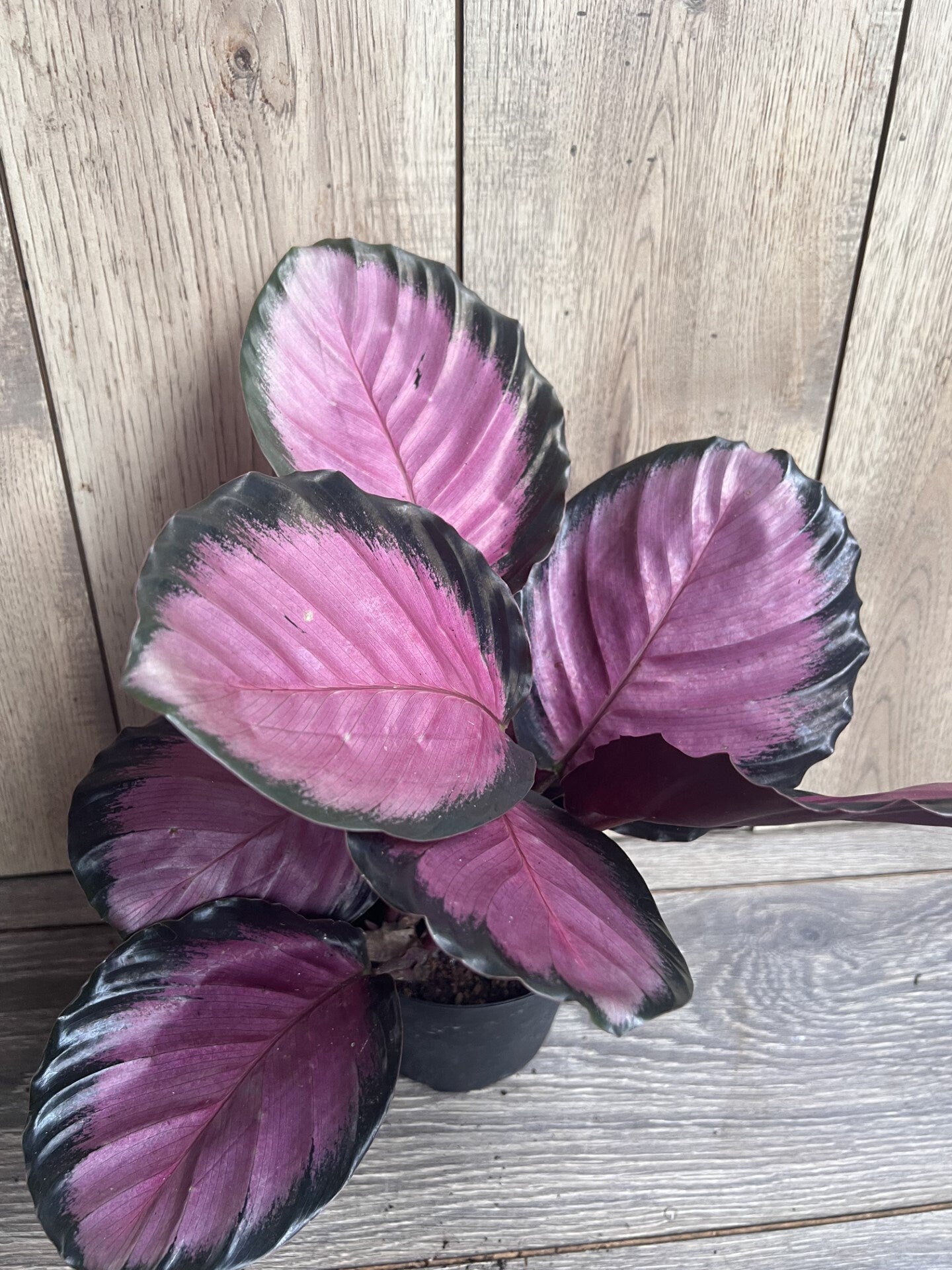Calathea pink star in 6" Pot
Calathea pink star in 6" Pot
Couldn't load pickup availability
You will receive 1 Calathea Pink Star in a 6" pot, similar to the pictures.
About the Plant
The Calathea Pink Star (Calathea roseopicta 'Pink Star') is a stunning, ornamental variety of Calathea known for its vibrant pink patterns on lush green leaves. As part of the Maranta family, this tropical beauty thrives in warm, humid environments. Proper care ensures it maintains its stunning pink patterns and vibrant growth.
Light Requirements
- Bright, Indirect Light: Thrives in filtered, bright light. Avoid direct sunlight, which can scorch leaves or fade their vibrant colors.
- Low Light Tolerance: While it can survive in lower light, growth may slow, and pink patterns may become less vivid.
- Best Placement: Near a north or east-facing window with filtered light.
Watering
- Consistent Moisture: Keep the soil evenly moist but avoid sogginess. Overwatering or allowing the plant to sit in standing water can lead to root rot.
- Water Frequency: Water when the top 1-2 inches of soil feel dry. Typically, water once a week during the growing season (spring and summer) and reduce watering in winter.
- Water Quality: Sensitive to chlorine and fluoride in tap water. Use filtered water, rainwater, or allow tap water to sit for 24 hours before watering.
- Drainage: Ensure the pot has proper drainage to avoid root rot.
Temperature & Humidity
- Ideal Temperature: 65°F to 80°F (18°C to 27°C).
- Avoid Cold Drafts: Keep away from temperatures below 50°F (10°C) or sudden changes in temperature.
-
High Humidity Required: Thrives in 50% or higher humidity.
- Use a humidifier, especially in winter.
- Grouping plants can create natural humidity.
- Mist leaves lightly, but avoid excess moisture.
Soil
- Well-Draining & Moisture-Retentive: Prefers light, peat-based soil with added perlite or coconut coir for aeration and improved drainage.
Fertilizing
- Spring & Summer: Fertilize with a balanced 10-10-10 liquid fertilizer diluted to half-strength every 4-6 weeks.
- Fall/Winter: Reduce or stop fertilizing to prevent overfeeding during the dormant season.
- Organic Options: Fish emulsion or worm castings are great slow-release choices.
Pruning & Maintenance
- Remove Yellowing or Dead Leaves: Prune off old or dead leaves to encourage healthy growth.
- Clean the Leaves: Dust can block light, so wipe leaves with a damp cloth or sponge every few weeks.
- Trim Brown Tips: These often indicate low humidity or inconsistent watering. Use clean scissors to cut them off as needed.
Repotting
- Every 1-2 Years: Repot when the plant outgrows its pot or the roots become root-bound.
- Best Time: During spring or early summer when the plant is actively growing.
- Root Pruning: Trim overcrowded roots during repotting and refresh the soil to boost nutrient intake.
Pests & Problems
Common Pests
- Spider Mites: Look for fine webs and speckled damage on leaves; thrive in dry air.
- Mealybugs: White, cotton-like clusters, often on leaf joints or stems.
- Aphids: Leave sticky residue and distorted leaf growth.
Treatment
Treat pests with insecticidal soap, neem oil, or a mixture of dish soap and water. Treat both the top and underside of leaves.
Common Issues
- Yellow Leaves: May indicate overwatering, underwatering, or low humidity.
- Brown Tips: Likely caused by low humidity, chlorinated water, or inconsistent watering.
- Curling Leaves: Usually a sign of overwatering, underwatering, or cold drafts.
Toxicity
Non-Toxic to Pets: Safe for cats and dogs, making it a great choice for households with pets.
With the right care, Calathea Pink Star will remain a vibrant, eye-catching addition to your indoor plant collection. Enjoy its stunning pink patterns and lush green foliage! 🌱✨
Share
